Learn how to use a homeschool reward system to motivate your learners and take control of your homeschool without tears. Start with this FREE list of fun homeschool reward ideas! ↓↓
Hey there homeschoolers! Are you feeling stuck with motivating your homeschoolers to work hard in their learning routines?
I’m with you!
The last couple of weeks, I’ve had trouble motivating my preschooler to do his reading lessons and chores.
Even though I’m a fully qualified teacher, I became frustrated because I had lost focus on rewarding his GOOD behavior.
It wasn’t until I implemented the strategies below until I saw him enthusiastically change his attitude towards the things we needed to accomplish in our homeschool.
If it worked for me, it will work for you!
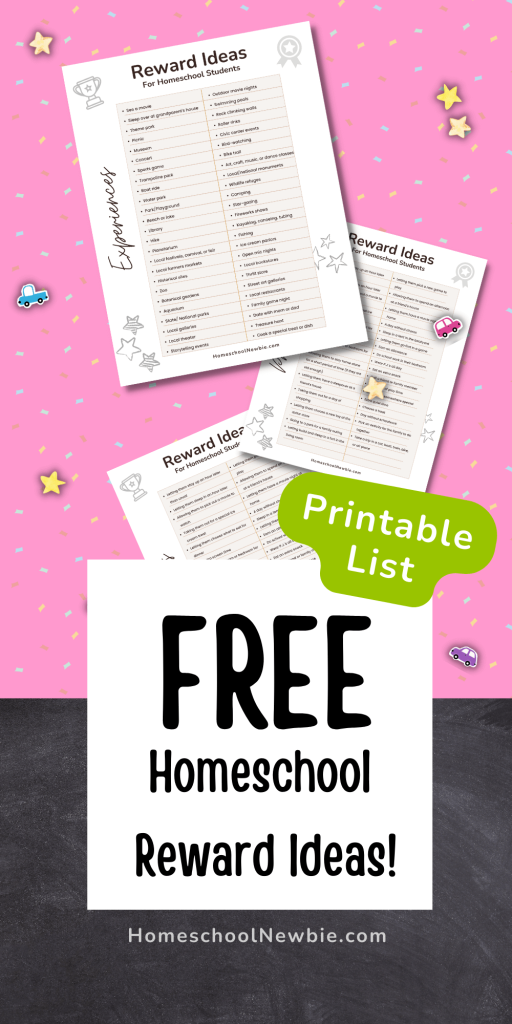
Take back your homeschool (and your sanity) by introducing reward systems! Homeschooling can be frustrating at times and if you’re like us, you need a visual way to keep those kiddos learning with enthusiasm.
Here are some of my favorite positive reward systems that will motivate and encourage your kids while homeschooling.
Table of Contents

Why a Homeschool Reward System is Important
Reward systems can be a great way to motivate homeschool students by focusing on the positive effort they give rather than focusing only on punishments.
Positive motivation strategies are important if we want our children to develop long-term results.
Here are some ways homeschool reward systems can help impact your students:
1. Rewards can help build a sense of accomplishment and pride in their progress.
When students are rewarded tangibly, verbally, and visually for their effort, they can physically see their progress. Visually displaying their effort can help them feel proud of their work and encourage them to continue to show positive behavior.
2. Rewards can help motivate students to independently complete tasks and meet their own goals.
When you involve your child in the process of creating a reward system, it can also help them develop a sense of ownership in their actions. By providing expectations beforehand, students can take the responsibility of their work by keeping track of their progress using rewards systems.
3. Rewards can help build positive relationships between your student and yourself.
By providing rewards to your students when they work hard, it is a physical way to show that you appreciate their efforts enough to reward them for it.
HUGE List of Homeschool Reward Ideas!
Below, I’ve listed some homeschool reward ideas that you can use as you brainstorm with your child about homeschool incentives for accomplishing their goals.
I didn’t include the FULL list of reward ideas because it was massive. SO, if you want the full list, be sure to…
Sign up below ↓↓
To download the full printable list!
Homeschool Reward Ideas By Type
Instead of just dumping a huge list of ideas, I’ve organized the rewards according to category. As you will see, most of the rewards on the list are experience-based rather than the typical candy or prize-related rewards.
Category 1 – Special Experience Reward Ideas
Instead of physical rewards, give your students experiences to create memories and extend their learning!
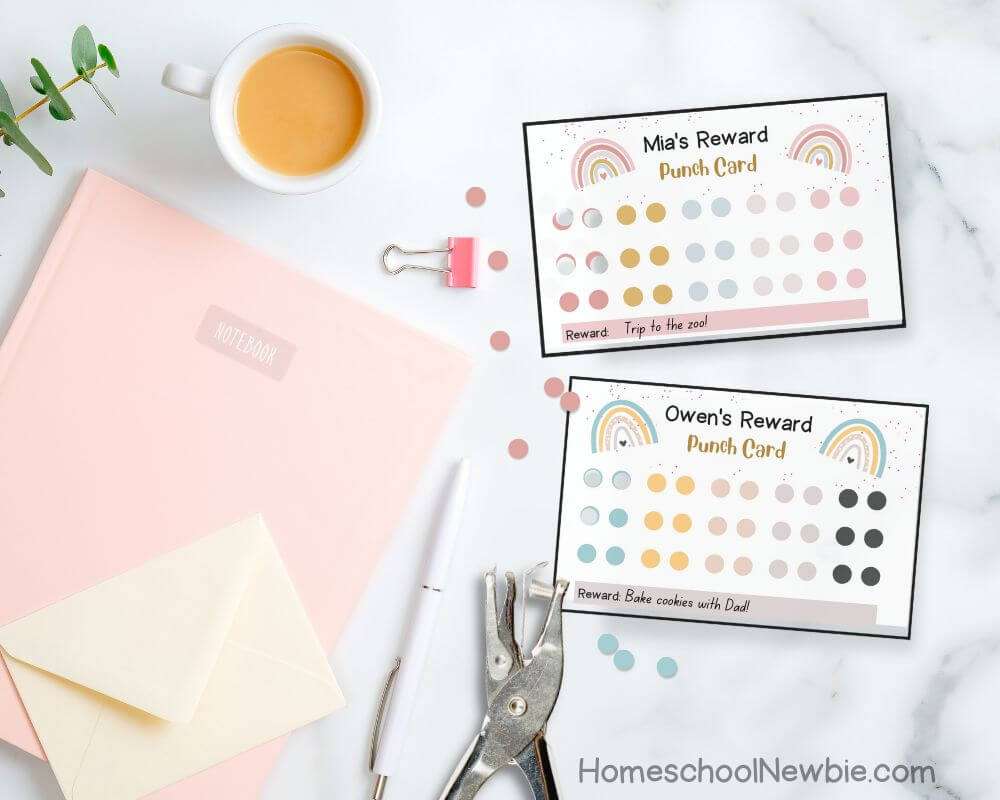
- See a movie
- Sleepover at a grandparent’s house
- Picnic
- Museum
- Concert
- Sports game
- Boat ride
- Park/Playground
- Beach or lake
- Library
- Hike
- Planetarium
- Local festivals, carnival, or fair
- Historical sites
- Zoo

Sign up to download 50+ more reward experience ideas!
Category 2 – Special Privileges Reward ideas
Sometimes the most motivating thing for students is to be able to do something they don’t normally get to do! Here are some homeschool incentive ideas to inspire your children.
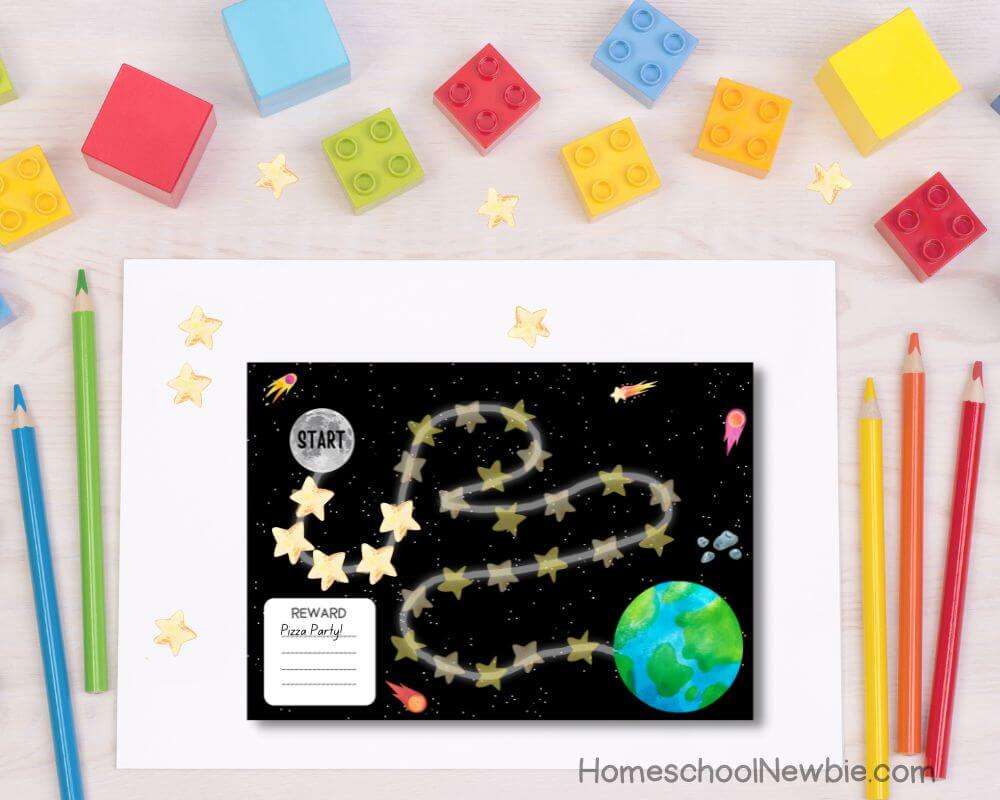
- Letting them stay up an hour later than usual
- Letting them sleep in an hour later
- Allowing them to pick out a movie to watch
- Taking them out for a special ice cream treat
- Letting them choose what to eat for dinner
- Get extra screen time
- Eat in the living room or bedroom for a meal
- Allowing them to stay home alone for a short period of time (If they are old enough)
- Letting them have a sleepover at a friend’s house
- Taking them out for a day of shopping
- Letting them choose a new toy at the dollar store
- Letting them choose a family outing
- Letting them build and sleep in a fort in the living room
- Letting them pick a new game to play
- Allowing them to spend an afternoon at a friend’s house
Sign up here for more privilege reward ideas!
Category 3 – Time with a Parent Reward Ideas
Show your children how much you care about their progress and achievements by doing something you both love!

- A parent teaches a hobby or skill
- Date with mom and dad
- Play board games together
- Go to work with mom or dad
- Parents does an activity of choice with child
- Do a science experiment together
- Make dinner or dessert together
- Get a nice letter from mom and dad
- Play a board or video game with parent
- Go on a hike or walk with parent
- Talk about parent’s childhood or past
- Write a story or play with a parent and act it out together for the family
- One-on-one time with a parent
- Go on a picnic
- Go feed the ducks
Sign up for more parent time ideas
Category 4 – Using Your Child’s Interests Reward Ideas
Do they like puppies, cars, comics, dance, video games? You name it! Just by adding a little interest, you can provide extra motivation to any reward.
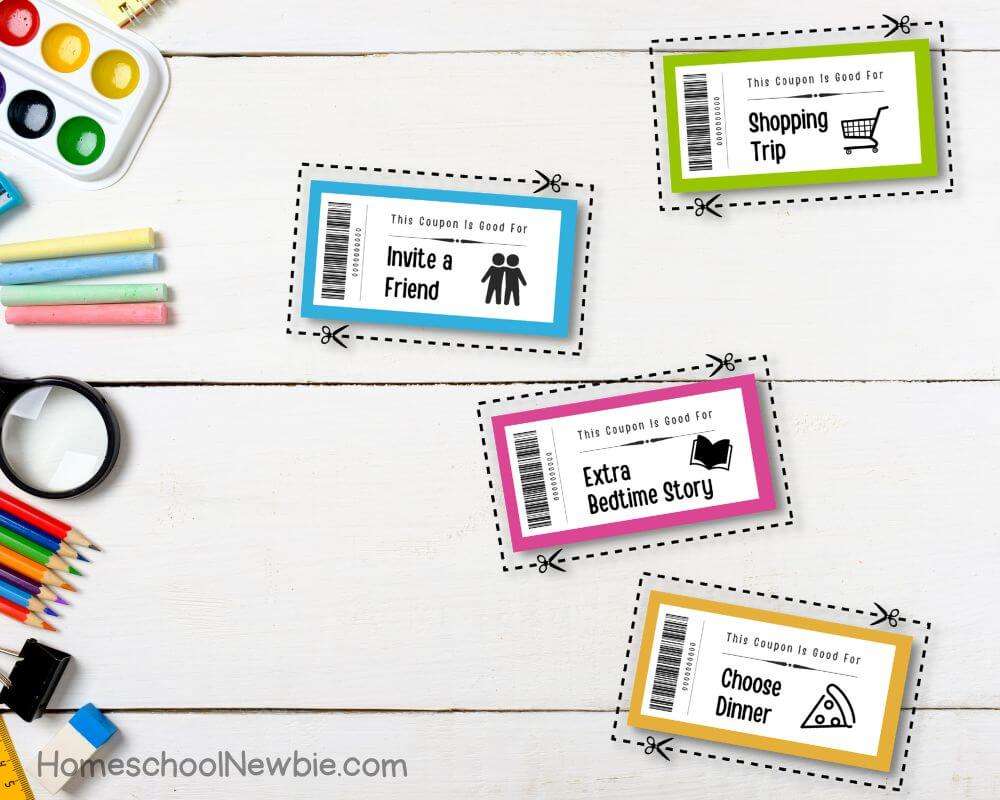
- Buy or make your child a princess dress
- Use car stickers to track progress
- Take them to a horse riding lesson
- Surprise them with a new video game
- Make a unicorn cupcake or cake
- Go to a puppy store to pet and hold the puppies
- Go to the dinosaur museum to learn about ancient life
- Make a pop up card to give to a friend or elderly person
- Make a space themed sensory bin to play in
- Go swimming at the pool, pond, or beach
- Learn to paint a picture of their favorite animal
- Build a table, chair, or skateboard with wood working
- Go thrift shopping to find a toy or electronic to take apart
- Take them camping
- Teach them origami
Sign up for more interest-based reward ideas

5 Steps to Create a Reward System for Kids – That Work!
Here are five simple steps to help you know how to set up an at home reward system with your kids!
STEP 1. Creating a Reward System: Set Specific Goals
Setting specific bite-sized goals helps you and your child focus on one behavior that you want to encourage at a time. You can always add more to your goals as they accomplish them over time.

These goals could include completing assignments, reading a certain number of books, completing chores, or working on a project.
Consider setting a timeline for completing the goal and when they can expect their reward. The length of time that you decide on will depend on the goal and the age of your child.
STEP 2. Creating a Reward System: Communicate Clear Expectations Together
Communicating clear expectations for the goals you set together helps your child understand what is expected of them and what will happen if they do or don’t accomplish their goals.
Get your child involved in the expectations: One of the best ways to get your child on board with you is to involve them in the planning process!
With your guidance, invite your child to decide on expectations of behavior and routines. Discussing why something is important and having your child involved in the decision will help them feel a sense of ownership and independence.

Start by discussing with your child what the desired behavior or goal looks like.
Practice your expectations together – especially with younger children. Show your child what it looks like to accomplish their goal each day successfully by acting it out or talking through the steps before you start.
Choose the rewards & consequences together: Describe both the positive outcomes of their choices, as well as what will happen if they don’t accomplish their goals each day.
Remember to grab the list of homeschool reward ideas that will make this process of choosing your child’s reward super easy!
Make sure that these expectations are realistically within reach of your child and only give consequences you are willing to follow through with.
STEP 3. Creating a Reward System: Track Progress
Tracking progress can be done using your reward system visually or verbally throughout the process of working towards your student’s goal.
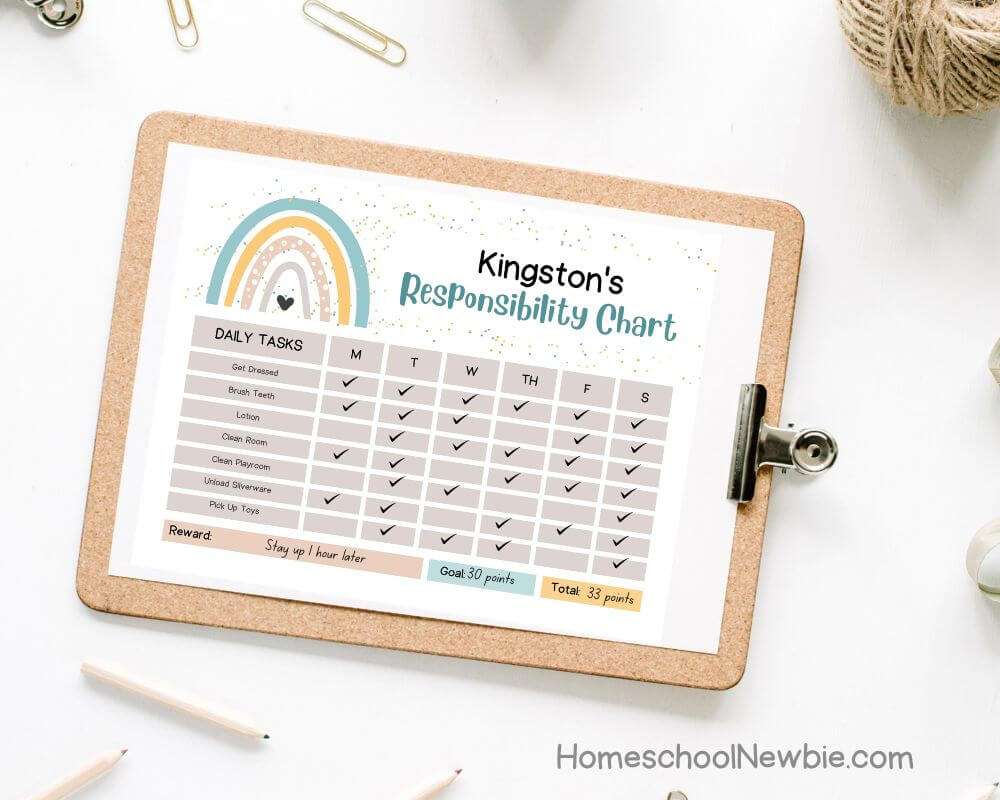
If you’ve set clear goals and expectations beforehand, it is unnecessary to remind your child over and over again about completing their goals.
Encourage them to keep track of their progress on their own then have a time of day where you discuss how it went.
Have them tell you how they think they did and if they think they’ve earned a reward. Then reinforce the consequences you discussed beforehand, whether positive or negative.
This will help teach your child to rely on their own initiative rather than your prompting to accomplish their goals.
STEP 4. Creating a Reward System: Stay Consistent
It may be tempting to throw in the towel or keep switching the reward system if things aren’t progressing how you’d like. Although it is great to be flexible, many of us give up before things start to improve.

If you know that your child has the ability to accomplish the goals you’ve set and you’ve communicated clear expectations, stay true to the goals you’ve set with your child for the time period you agreed on.
Consistency with reinforcing positive and negative consequences may get old after a while but if you stick with it, both you and your child will see the reward of your hard work!
STEP 5. Creating a Reward System: Reflect & Allow for Flexibility
As you and your child reflect on your experience together, you are likely to spot areas that need adjustment through this process.
While keeping consistent, you can try switching or tweaking how you approach your homeschool reward systems to motivate your child.

You can try switching the stickers from smiley faces to their favorite animals or if the reward doesn’t seem to be motivating to your child, let them choose their own reward.
Use your parental intuition to help guide you. You know your child best! Use that superpower to incorporate the necessary adjustments you need to help them succeed.
7 Types of Rewards to Try in Your Homeschool
There are many homeschool behavior management tools to keep in your back pocket. Start by exploring these seven types of homeschool reward systems to see what fits your family’s needs best.
Pssst! I’ve created a done-FOR-you homeschool reward system bundle full of all the types of rewards that I’ll mention below. This bundle is designed to make your homeschool experience run smoothly without tears from your children (or yourself! 😂😭).
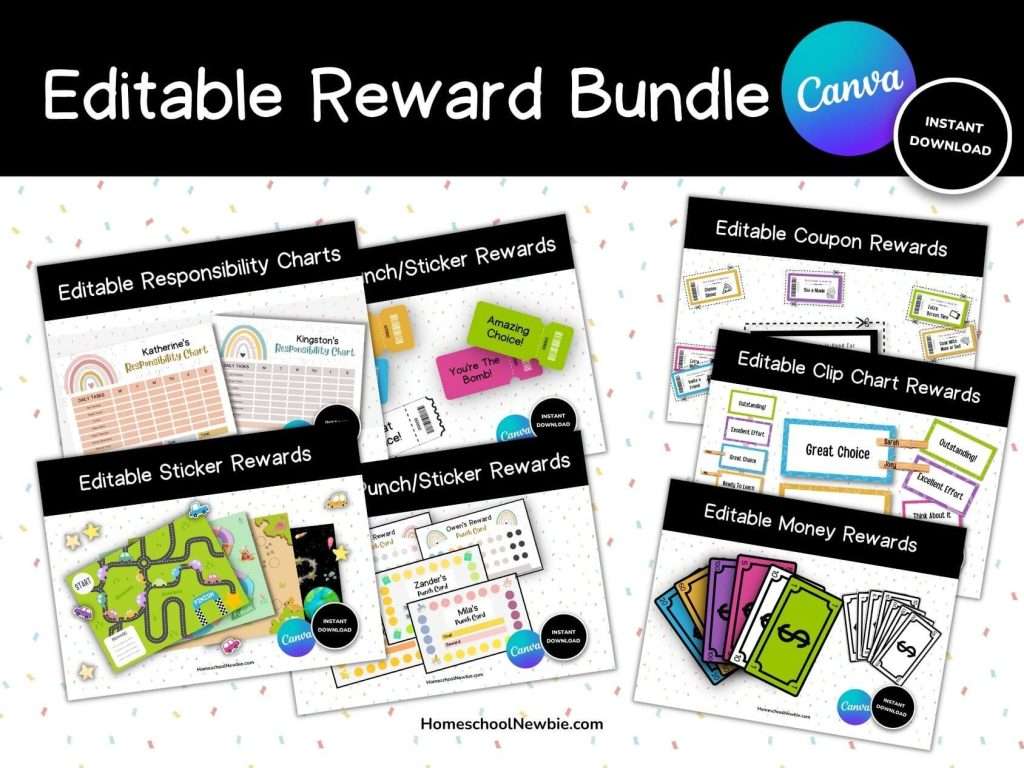
1. Types of Homeschool Rewards: Verbal Praise
Give genuine and positive words of encouragement to help your students understand what behavior they are doing well. Verbal praise is more than saying phrases like “great job” or even “you did a fantastic job!” when students do something well.
To do verbal praise effectively, your praise needs to be specific and genuine such as “You worked hard at reading the word ‘cat’ even though it was tough!”.
This type of praise helps motivate students because it is immediate, customized, and meaningful.
Being specific with your praise also lets them know exactly what they did well which helps them know what they need to do in the future to repeat it.
2. Types of Homeschool Rewards: Points System
It works by giving students points, tallies, stickers, or other ways to measure completing tasks or good behavior. When your students have collected enough points, they can use those points to earn physical rewards or experiences.
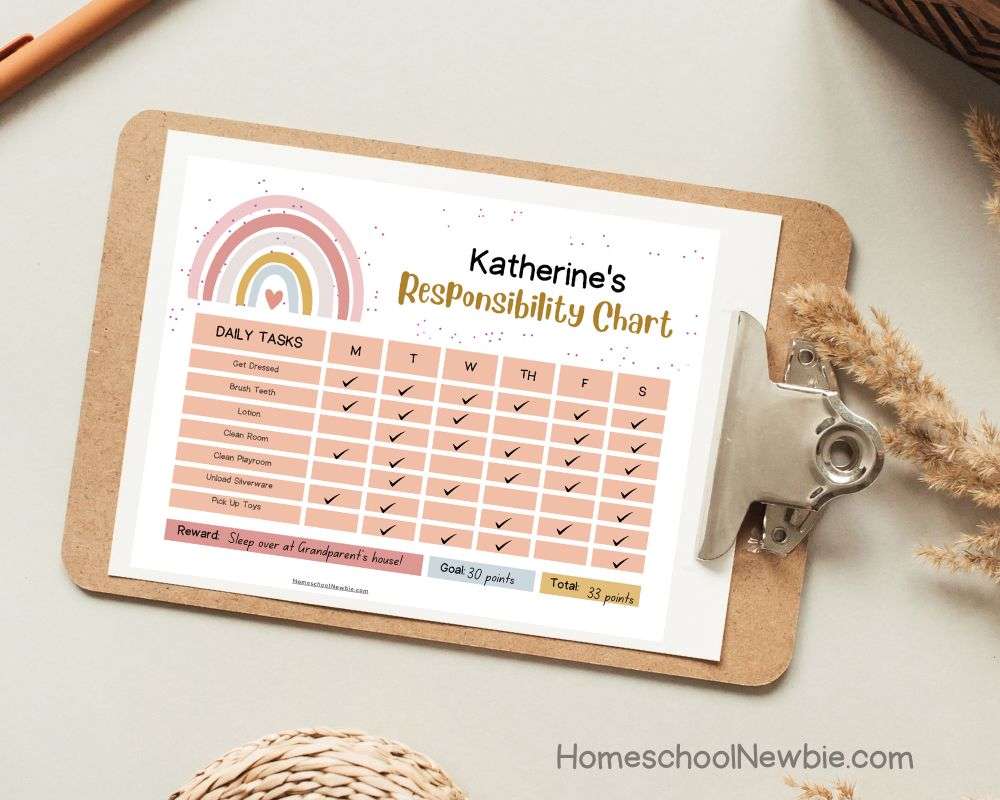
3. Types of Homeschool Rewards: Clip Chart
For those students who need a visual way of tracking both positive and negative consequences for their actions, a clip chart may be one to consider.

Students move up the homeschool reward chart when they are behaving well and down the chart when they are not. Discussing the consequences of both good and bad choices beforehand will help your students learn from their actions.
4. Types of Homeschool Rewards: Chore Charts
This homeschool behavior chart helps you assign tasks to your students, helps them to set goals, tracks their progress, and displays your student’s reward when they reach their goals.
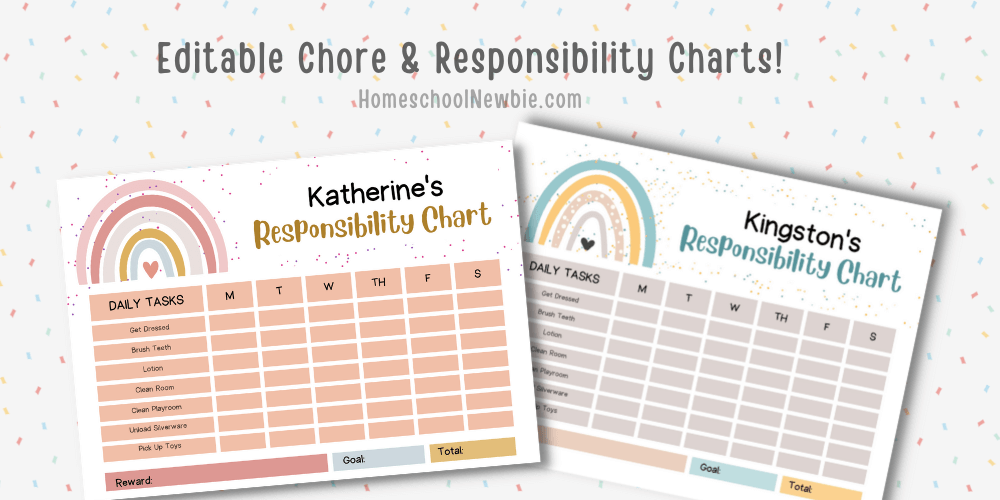
It is kind of like a visual checklist where your students can see what is left on their to-do list as they work on completing the tasks.
When done consistently, these homeschool incentive charts can encourage good working habits over time.
5. Types of Homeschool Rewards: Ticket Reward System
Your students collect tokens, play money, or tickets when they demonstrate positive behavior. These tokens can then be exchanged for rewards when they earn enough to purchase prizes!
You can create a homeschool store or a treasure box. Some homeschool prize box ideas could include treats, gum, small toys, coupons, school supplies, or craft supplies.
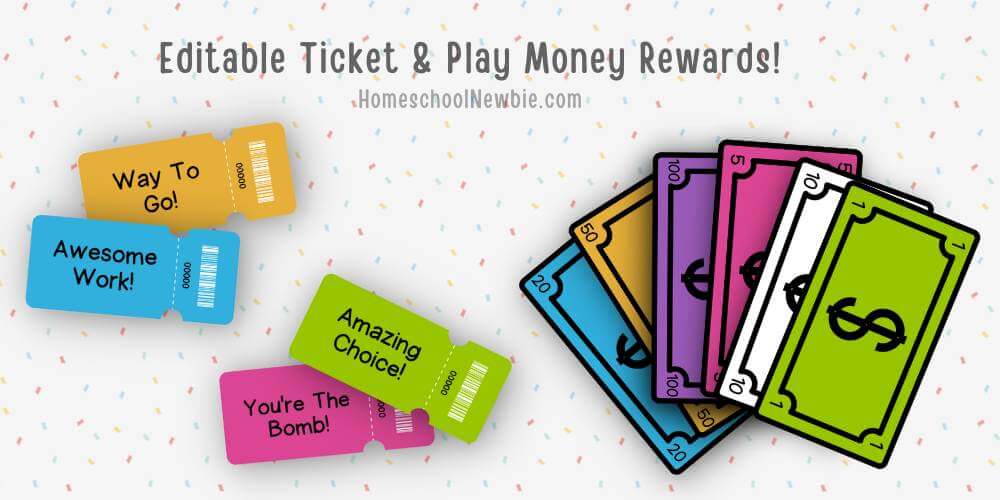
6. Types Of Homeschool Rewards: Sticker or Punch Chart
This reward chart for homeschool works by giving stickers or hole punches for good behavior. When your student fills up their chart, they get to enjoy their reward.
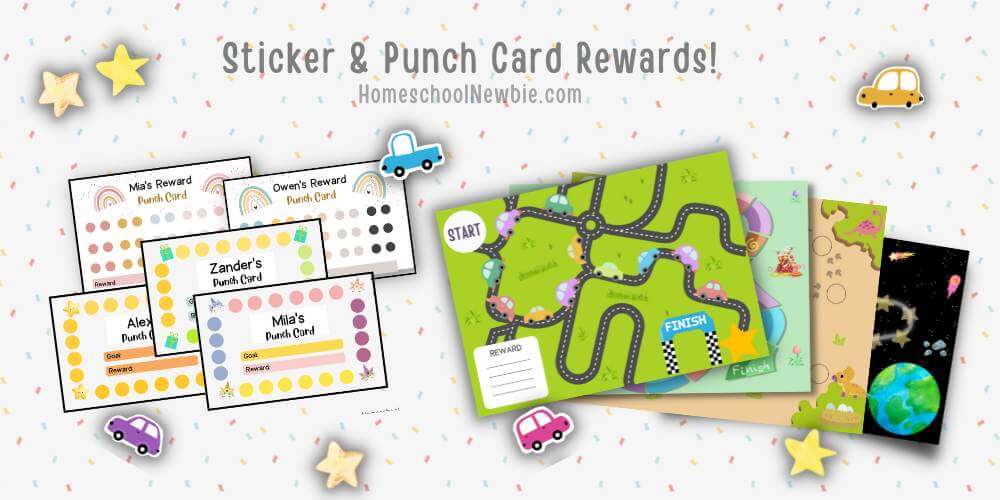
7. Brag Tags
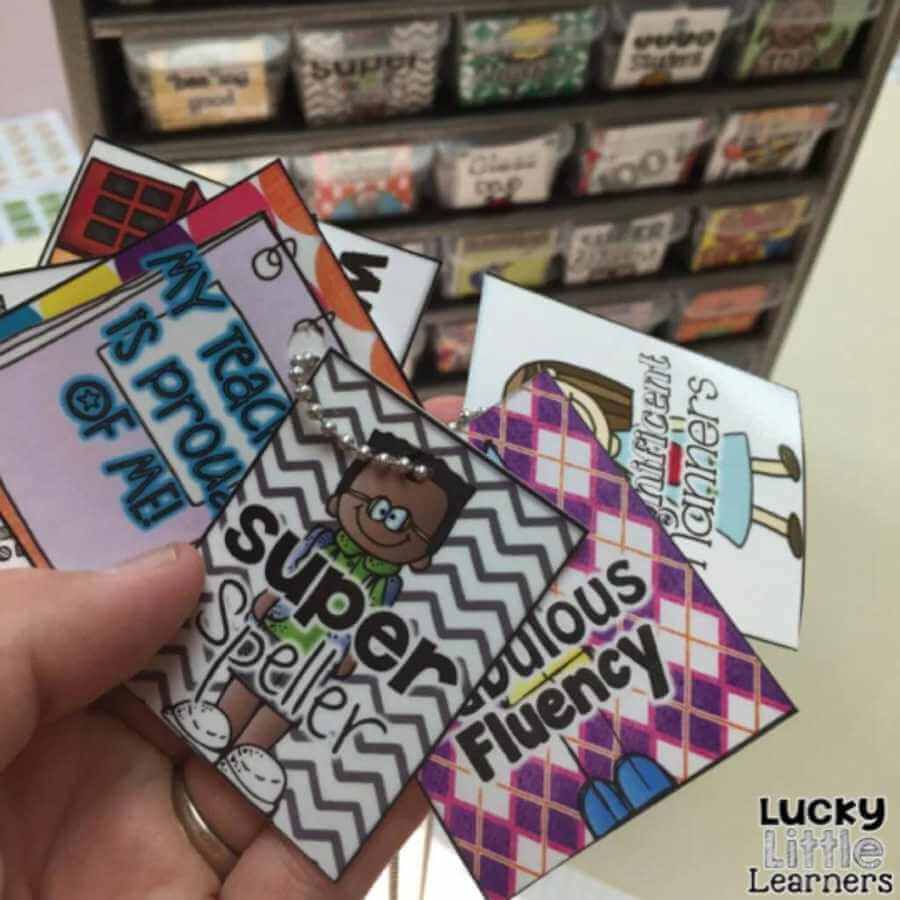
Brag tags are a clever way to puff up your child’s confidence when they show good behavior in your homeschool.
You reward your children with brag tags when you catch them doing good behavior throughout the day or participating in special activities. There are tags for things such as “Kind to others” or “I was caught using my time wisely”.
Photo By: Lucky Little Learners
Your children can collect brag tags on a necklace similar to charms on a bracelet. This makes it easy for them to look at each good deed and see their hard work over time.
Lucky Little Learners has TONS of brag tags available for you to download in their All Access Pass. They are running a sale for 10% off right now when you use the coupon CODE: TORI10! (When you use my affiliate link it helps my small blog stay up and running – THANK YOU!)

Conclusion: Fun Homeschool Reward System Ideas & How to Create one!
I hope this was helpful as you begin rewarding your children! When used effectively, reward systems can be powerful tools for motivation and success in your child’s learning.
What’s Next?
Don’t miss out on the reward systems bundle that I created to help you take control of your homeschool classroom in fun ways!


Hi, I’m Courtney! I’m the founder of homeschoolnewbie.com. I’m a former elementary school teacher turned homeschool mama who has a passion for home education! I have 10+ years of experience working with children in all kinds of educational settings. As a new homeschooling parent, my mission is to navigate the world of homeschooling and share with you the best home education practices. If you want to learn more about me, check out my about page. See you there!



